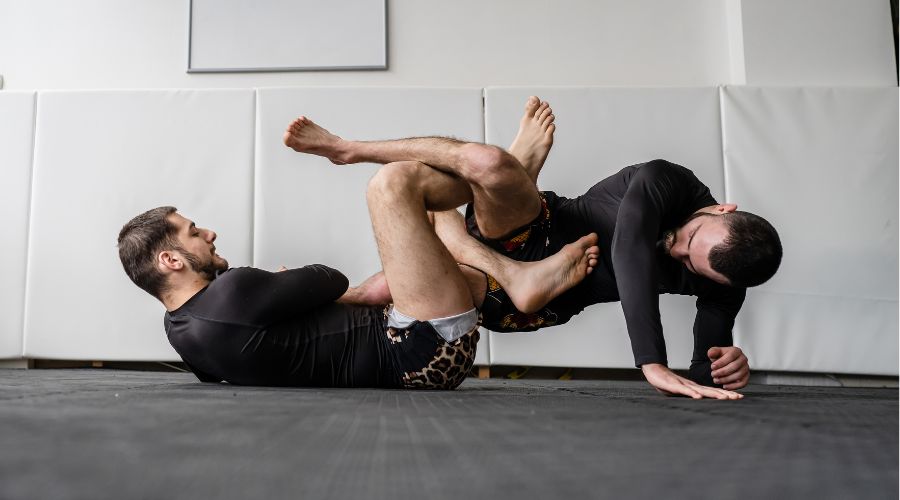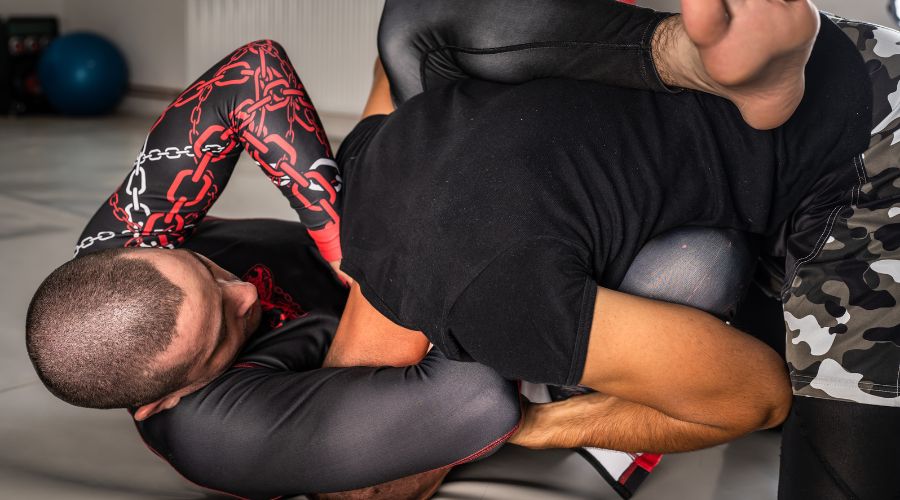Brazilian jiu-jitsu is a fighting system based on technique, leverage, and body mechanics, but some have described these techniques as a better way to apply strength. So, while technique is the fundamental part of jiu-jitsu, different types of strength are required. But can BJJ make you stronger on its own?
BJJ training will develop strength in the whole body, more in muscle groups like the hands, core, and arms than in others. But this is more a specific type of strength, like isometric strength and endurance, rather than the ability to lift heavier things.
The debate over whether or not strength and conditioning are necessary for BJJ has been raging for decades, but the consensus is that they are. BJJ makes you stronger in certain ways and will help you get more ripped, but you must do some extra work for a complete physique.
Will BJJ Make You Stronger?
The process of jiu-jitsu training, with all of its drilling and sparring, will make you stronger, but not in the conventional way weightlifting does. There are different kinds of strength—maximal, explosive, isometric, and strength endurance—all of which play a role in various degrees in jiu-jitsu.
BJJ training alone is a great full-body workout and will develop serious isometric strength and endurance in some muscle groups and less in others. For example, the core, including the abs, lower back, and hip muscles, will work a lot and grow stronger.
Grips strength, forearm strength, and endurance may receive the most significant gains, especially when training in the gi. The legs develop isometric strength from holding someone in your guard or squeezing for a triangle choke. The neck will also become significantly stronger, even without additional training, due to the constant pressure applied.
Joints and tendons will gradually and naturally become stronger from grappling. The biceps and arms will become stronger and have drastically more endurance as you progress through all the grips, chokes, and submission attempts.
But these improvements in strength are sports-specific, have little cross-over to what most people recognize as general fitness strength, and will only help you a little in moving heavier weights. Moreover, some muscle groups will do the bulk of the work, while others still need to be addressed, which can create some muscular imbalances.
Does BJJ Build Muscle Mass?

Jiu-jitsu training will make you stronger in certain aspects, but it does not create enough stimulus to promote significant muscle growth.
The requirements for the muscles to grow in size are metabolic stress and mechanical tension. BJJ movements create tension, but most of the time, the muscles do not move through enough range of motion, and the time under tension is too low.
For hypertrophy, the muscles need to go closer to failure, either by lifting heavy loads through a full range of motion or by doing the exercises with a light load but for more repetitions.
BJJ does not meet this criteria for most muscles. However, the forearms, fingers, and hands are often tensed to failure, so grapplers build immense gripping strength simply by doing their sport.
Very few movements in jiu-jitsu require a full range of motion to maximize metabolic stress. Through training on the mats, isometric strength and endurance are well developed, but maximal strength and muscle growth are not.
Jiu-jitsu alone will develop most of the strength required for its needs. However, additional strength and conditioning work is recommended to look more aesthetic, supplement your skills with applicable strength, and reduce the chance of injuries.
Is Strength Important In Jiu-Jitsu?

Jiu-jitsu is often marketed as the perfect system for a smaller person wanting to defeat a larger and stronger one. This is true when the big guy does not know how to grapple or the skill gap is big. But the closer the skills of the two wrestlers are, the more strength plays a role.
The first few times you do everything right in a roll, and the guy in front of you shrugs it off and overpowers you, the myth about strength being useless in BJJ evaporates. Especially in no-gi, physical attributes matter a lot.
The beautiful thing about jiu-jitsu is the enormous amount of techniques and possible tactics allow for entirely different body types to succeed and have working game plans according to their strengths.
You can see guys with big muscles like Gordon Ryan and Andre Galvao but also crafty, flexible guys like Keenan Cornelius and Mikey Musumeci. But even for the second group of athletes, specific strength is important, and they also work on it.
Yes, a few guys like Marcelo Garcia swear by not doing strength and conditioning work, but he is an exception to the rule, not the norm. 99% of elite competitors do specific strength and conditioning training outside their time on the mats.
Strength training is also one of the key factors in reducing the number of injuries and quickening the time for recovery from injuries when they do happen. Doing well-structured resistance training and having well-developed muscles (not necessarily big) has proven to be a significant factor in preventing injuries across all sports, not only grappling.
So, the question is not whether or not you should do strength and conditioning work, but rather, what is the best way of doing it?
Luckily, you are in the right place, and we have detailed concepts and programs to help you dominate the mats in our strength training for BJJ article.
Will BJJ Get You Ripped
Being ripped means you have a low body fat percentage with decent muscle mass, with body fat playing the bigger role. While BJJ has a modest effect on muscle size, it’s essential for reducing body fat.
The simple math of losing weight is to be in a caloric deficit, meaning eating fewer calories than expending. Much more goes into where the calories come from and many other metabolic factors determining how much fat and muscle you will burn and build. Still, these are complicated topics for another time.
BJJ is a full-body activity with high and low-intensity bouts that burn many calories. The other variable is eating. If you eat less than what you burn, the body will start using the stored fat as fuel, and you will be one step closer to looking ripped.
There are a lot of online calculators, which may not be perfect but will give you a good idea of how much you need to be eating to be in a caloric deficit when you enter your training frequency.
If you are already at a low body fat percentage and want to look more ripped, then you will have to increase the muscle size, which sadly cannot be accomplished by jiu-jitsu alone, and you will need the help of resistance training with body weight, weights, or ideally both.
Summary
The combination of high and low-intensity exercise mixed with isometric holds and the occasional explosive movements in BJJ will make you stronger and in good shape. However, this will do little to build bigger muscles, for which resistance training is required.
Bigger muscles are not required for grappling, but they help in most situations and reduce the chances and severity of injuries, making strength and conditioning work for BJJ a worthy investment of time and effort.
